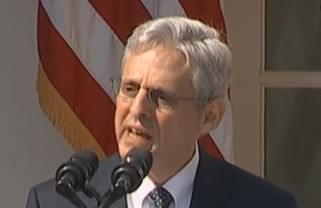
How would this work? On January 3rd, when the Senate gavels out of the 114th Congress, there is a five minute or so window before the 115th Congress begins. It is during those few minutes when President Obama could make the highly unprecedented (and unlikely) move and make an “intersession recess” appointment to put Merrick Garland on the highest Court.
Has a Justice ever been appointed to the Supreme Court during a recess? Yes, according to Scotusblog.com, there have been 12 recess appointments to the U.S. Supreme Court. But, there have been none in recent times with the last one occurring more than 50 years ago. And, interestingly, all but one have later been confirmed by the U.S. Senate. In 1795, by a vote of 10 to 14, the Senate rejected President George Washington’s nomination of John Rutledge to be Chief Justice of the United States after rumors swirled about his mental state. However, before he was booted, he decided two SCOTUS cases during his recess appointment.
Is it legal? Well, that’s up for debate and the much more interesting question. If Obama made this move, it certainly would be challenged. Article II, Section II of the U.S. Constitution says:
The President shall have Power to fill up all Vacancies that may happen during the Recess of the Senate, by granting Commissions which shall expire at the End of their next Session.
“Such an appointment requires no action at all by the Senate, but the appointee can only serve until the end of the following Senate session,” Supreme Court expert Amy Howe recently wrote. So that would mean if Garland was appointed Tuesday he could serve through December 2017, the end of the first session of the 115th Congress.
However, a recent Supreme Court decision that weighs in on the “appointments clause” puts a bit of a damper on Obama’s appointment powers. The National Labor Relations Board v. Noel Canning served to limit the presidential power to appoint during a Senate recess of less than ten days. In other words, the recess break has to be longer than 10 days for the President to make a constitutionally allowable appointment. However Justice Antonin Scalia noted in his concurring opinion that there is a difference between an intersession and intrasession break. Scalia believes the Appointments Clause was ONLY meant to cover breaks between congressional sessions rather than breaks within them. Some believe this could leave the door open for Obama to make the appointment in between the 114th and 115th Congress.
The Supreme Court opinion notes, “There are a few examples of inter-session recess appointments made during recesses of less than 10 days, but these are anomalies.” Could that leave President Obama some wiggle room?
So, what would happen if Garland was appointed? Of course, there would be a court challenge. Who would ultimately decide what would happen? That is really unclear.
“However, it is likely (conservatives) would need Garland to participate in a case that gets a ruling so they could have a plaintiff with standing to say they have been harmed by the Garland appointment. And then they would have to move that case through the lower courts. That process would take several months, and all the while the Supreme Court would have a center-left majority,” David Dayden commented in The New Republic.
Will this actually happen? Linda Greenhouse, New York Times columnist, who covered the U.S. Supreme Court for 30 years, told LawNewz.com she doesn’t think so.
”It’s a ridiculous idea. It would put Merrick Garland in an impossible position. Neither he nor the president would ever go for it. It’s a waste of mental energy that people are even talking about this. I have received dozens of emails from readers seeking to enlist me in this daffy cause,” Greenhouse said.
Regardless, if Obama tries to pull anything like this, you can be sure that conservatives, including Donald Trump’s head, would explode, and there would be massive efforts underway to stop his appointment.
[image via screengrab]